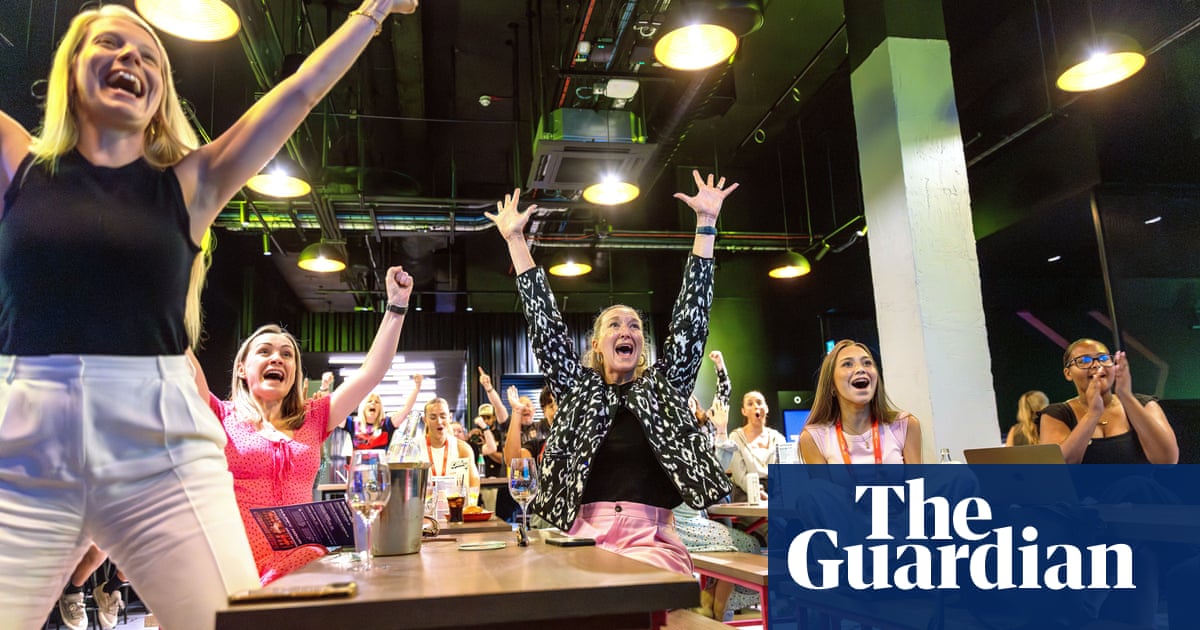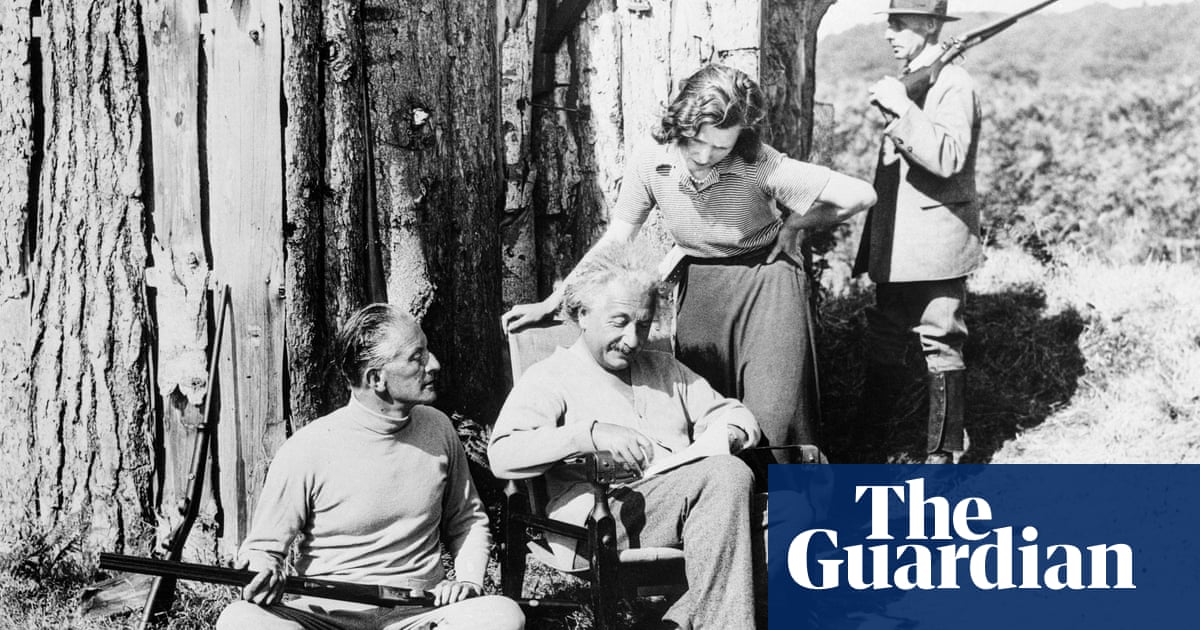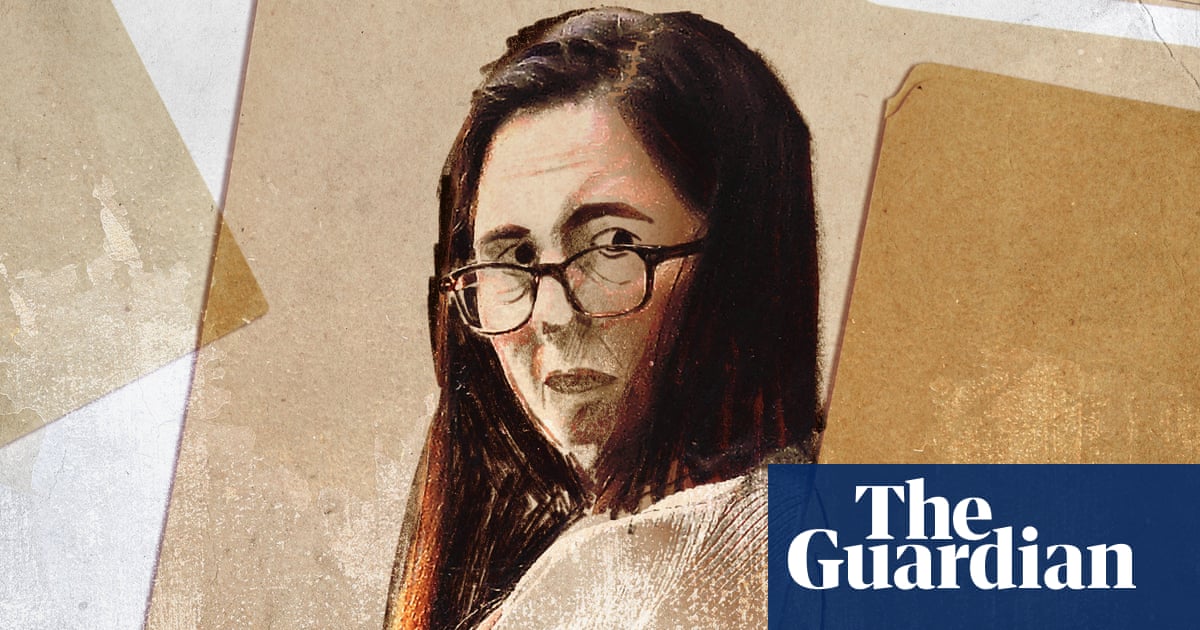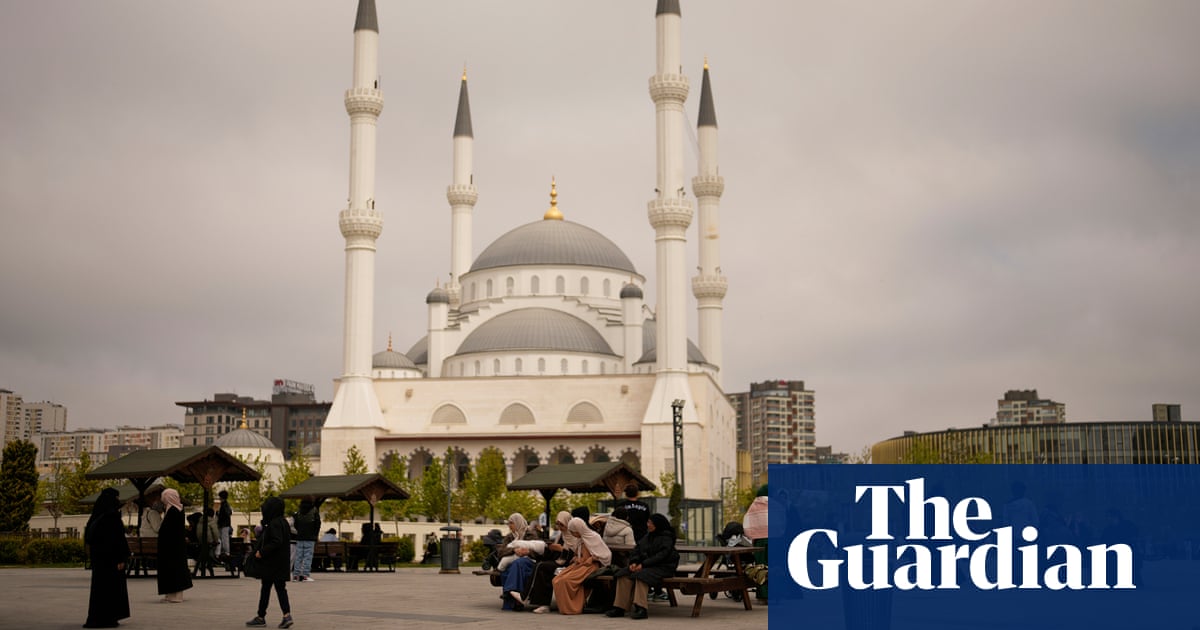Our wall planner is pinned on to a large cork board in the kitchen. Structured month by month in rows, it is parma violet, coral pink and butter yellow, and huge – a good metre long, almost the size of the table beneath it.
I bought mine online after a friend, who keeps hers Blu-Tacked by her front door, told me half-jokingly: “It’s the only thing between me and a divorce.” Ours is not quite so important. Still, as I wield my felt-tip pen, marking up school plays and holidays with our weird, inscrutable code, I do feel calmer. As if I’m scooping out my brain and smearing it all over the paper, leaving me free to track down more stuff to fill it with.
The annual wall planner is not new. Most offices have one, albeit in fiscal reds and blacks. But judging by my neighbours’ walls, these giant, brightly coloured versions are becoming something of a domestic endemic. Ryman has launched a colourful vertical version for a fiver that is presumably for the backs of doors, while Butler & Hill offers a wipe-clean “perpetual wall planner” that can be used year after year. It’s hard to know if they are more popular now than before, but on a recent trawl of Etsy, home of the cute-packaged-as-commerce, I lost track after scrolling through more than 200 versions.
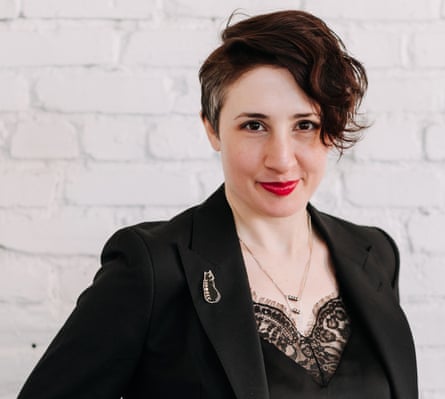
Michele Ferron started Good Tuesday, which is where I bought my planner, from her home in Cornwall in 2020 during the pandemic. Inspired by the verjaardagskalender, or Dutch birthday calendars traditionally kept in the toilet, she initially printed 10 and sold seven overnight via Etsy. “Then, in 2021, it went wild.”
The mother of three now ships thousands to more than 30 countries every year. Customers have told her the calendars have helped their “time blindness” (difficulty in perceiving the passage of time while completing tasks), “executive functioning” (the ability to juggle tasks), and “productivity”. Others even talk about their usefulness in neurodivergent households. Ferron relies on hers for the big stuff rather than the basics: travel, trade shows, festivals. She has ADHD, and says: “It brings calm among the digital overload. When otherwise everything is twirling around, it helps to anchor it all.”
Dr Martha Deiros Collado, a psychologist specialising in parenting, and author of the forthcoming book The Smartphone Solution, has two: a weekly planner for her and her husband “which is for art club or PE or any changes to a week” – and a big annual one “for essentials only”, which the children can read (her eldest is six). “It’s a way to ground their anxiety – or their excitement. She [my daughter] can count down how many days until someone’s birthday without asking us every five minutes.”
On the one hand, I love my planner. It’s the easiest way for us to navigate the hellscape of the summer holidays – and one damn thing that I haven’t outsourced to my phone. On the other, it can be … well, overwhelming. In February, the weeks stretched out with raw possibility. Yes, I had a root canal, but look at all that recovery time. Four months later, it resembles a magic eye – dizzying and unreadable, except to those fluent in our code. Ours is simple: our initials O and M, which indicate who is working at home, and who is in the office; AS for afterschool – and ASC for clubs (which are somehow different); din for dinner, bday for birthdays (though we rarely specify whose) and long black lines for holidays. But I’ve also heard stories of people marking their family planners by the hour, or adding menstrual cycles (red crosses) and ovulation dates (O, in pink), so the family knows to avoid Mum, or stay out of the bedroom.
Sometimes, looking at this record of my family’s life while I eat my Weetabix, I wonder how helpful planners actually are.
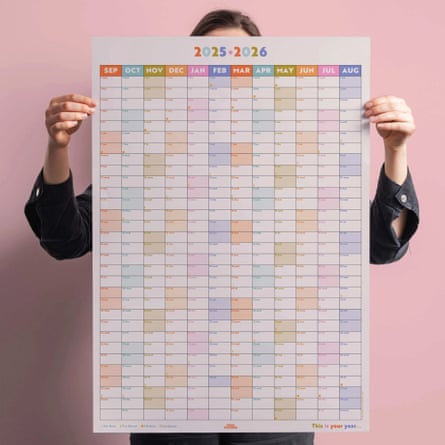
“There is too much scheduling,” says Collado. “Busyness is too valued in society. All this hyper-productivity – however positive some of it is – over just being present isn’t healthy, particularly for children. We need to protect small moments in life.” Indeed, the moral panic around keeping children occupied with extracurriculars is real; seeing your life writ large like that also has the adverse effect of showing you a Tuesday afternoon woefully unfilled.
But so too is the adult equivalent. As I’ve learned, it’s never enough simply to be too busy. Whether you’re posting on social media, or staying late in the office, everyone needs to know how full your life is, otherwise what’s the point?
Sarah Jaffe is an American labour journalist and author of the very quotable Work Won’t Love You Back. She thinks the overemphasis on planning started with Covid, which forced parents “to manage the schedule of everyone in the home, whether they were working or not” – though the same could be said for anyone trying (and failing) to have a spontaneous post-work pint or swim in the local pool. Post-pandemic, some aspects of life have returned to normal. But others, such as working from home or hybrid working, have stuck around. “With hybrid working, every day has a new configuration,” says Jaffe. All in all, it’s a toxic combination when it comes to planning your week, let alone year.
“Even if you have an unscheduled evening, you still feel the need to fill that,” says Jaffe, who has recently taken up knitting as a way to stop doomscrolling – but even that has become another deadline with which to beat herself. “We are now far more aware of the limit of our free time, which has in a way led us to optimising that too. It’s like, just how many ways can we find to overschedule ourselves?”
Jaffe thinks these wall planners have become popular at an interesting time. “We have two things going on concurrently. The fight for the four-day-week, or working less more generally, and the continued emphasis on hustle culture.”
In theory, the calendar has skin in both games, she says. One movement is about more free time, the other about time as a shorthand for money/work. Except, she says, just as intimate labour such as childcare and so on blurs the line between what we think should be done for love and what we think should be done for money, “the same blurring of work and home has led us to feel the need to manage and schedule every part of our lives”. There’s an argument that they’re even a little “class-coded”. Obviously, we need to plan things. But a lot of people’s lives and work don’t fall into that same rhythm, she says, such as delivery and Uber drivers and those on zero-hours contracts. “Planning is privileged.”
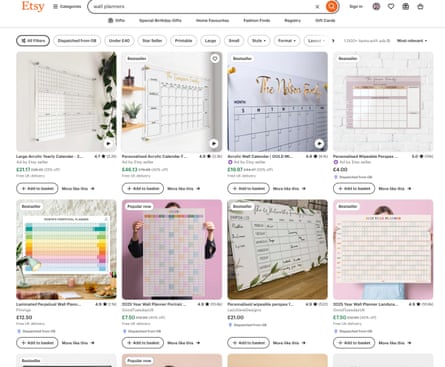
It’s even, she argues, gender-coded: “Those bright colourful calendars – who are they really for?” Ferron thinks they are simply an extension of interior design. “We tend to curate everything in our homes now, in our lives even, so why not calendars?” she says. But Collado agrees that this stuff tends to fall to the woman, and that’s probably why these calendars are skewed aesthetically towards them. They’re still preferable to anything digital, she says: “Google calendar is fine, but the responsibility of checking it lies with me. Once it’s out in the open, it becomes everyone’s problem. I don’t want to have to carry the load of the family plan.”
None of this feels particularly healthy, though. When my partner, who is freelance, looks at it, he can virtually tot up his bank balance. For me, whose work life is more structured, the type is so small I need glasses to read it – and I barely need glasses. No week goes unmarked and however helpful it is to know what lies ahead, when you’ve been up since the crack of dawn ticking things off, the colours can swim.
Ultimately, if your calendar is too full, it’s probably because you’re working too much, or struggling for time outside work on account of capitalism exploiting you or, at the very least, as Jaffe puts it, “encouraging a culture which values productivity, in whatever form it takes, over everything else”. She thinks sometimes planners and calendars can “become a sort of metric for business and productivity.” And where productivity can be tracked with increasing accuracy, so too can failure.
One friend has a homemade wall planner for just the summer months, which he calls “the 2025 Summer Logistical Nightmare” written in a slasher-film font. Using Post-it notes and pencil, so he can move things round, it reminds me of that insidious practice of decluttering. The more stuff we can remove – or check off – the more in control we feel.
Unsurprisingly, Jaffe does not have a wall planner, preferring the relatively old-school combination of a to-do list and Google calendar. “I wish I didn’t [use the latter] but it transfers easily and I have less to pack when I’m travelling,” she says. “In some ways, outsourcing this stuff to Google or planners or whatever, it’s all the same thing.” It’s about streamlining your life so you can be more productive, “usually at work”.
So what’s the answer? Collado suggests “planning not planning”. “I plan to not-plan things across the year. Using tape, we will block one weekend a month.” If someone asks them to go for lunch or out that weekend, she simply says that they have plans. “Not-planning for us involves rest, pottering about, sitting in pyjamas. Which is why, when you look at my calendar, a lot is deliberately white.” In this way, the wall planner can be a helpful bouncer-like presence, gatekeeping rare and precious genuinely “free” time. Collado implemented not-planning after the birth of her second child. “My time is more stretched, and if you don’t protect it, before you know it, it’s gone and you become resentful.”
You could think of these non-planned moments as fallow time, essential to recovery and long-term health. We all struggle with a work/life balance, and often planning is an essential part of our lives. But so too is having unstructured free time. It may be the only way – at least for parents – to salvage something organic, something spontaneous. We should be more deliberate with our time, not least because I think it would negate our tendency towards cancelling plans – the best-laid plans are usually the first to fall.
Sometimes I wonder if it’s all just plain economics, and these planners are barometers of inflation (as they get bigger, the days seem to shrink). If nothing else, seeing ours loom over the family every morning, it reminds us why we chose our work/life/family/everything in the first place. It also serves as a reminder of that old truism about life in early middle age: the days are long but the years, even when they are colour-coded, fly by.

 10 hours ago
6
10 hours ago
6









